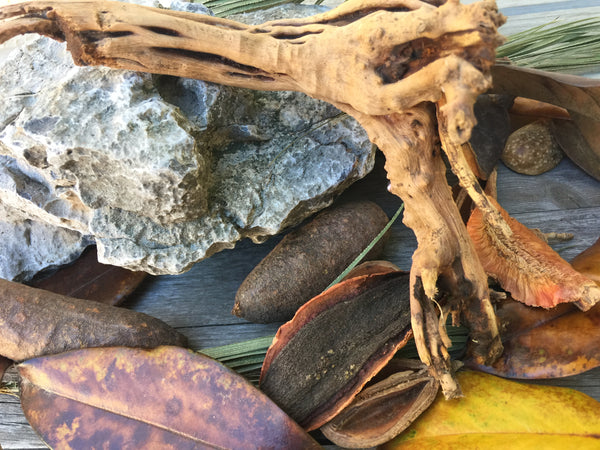- Continue Shopping
- Your Cart is Empty
Its not that terrible in The Tapajos...Musings on "Whitewater", Botanical-Influenced Systems
Now it seems kind of funny, in this blog called "The Tint" that today's subject is clearwater botanical-influenced systems!
"Yikes...what! Fellman's not blabbering about a blackwater system?"
Now, don't get me wrong- just because water is "white" doesn't mean it and the organisms which reside in it are not interesting to a geek like me! I just happen to be a bit obsessed with the more "tinted" water. Nonetheless, with some many fishes coming from fascinating "whitewater" habitats, I'd be remiss if I didn't talk about this topic now and again!

("Whitewater" madness by Mike Tuccinardi!)
Part of what inspired me today was a product description I was writing for a favorite fish that we'll feature on Tannin Live! (shameless plug), Crenichicla regani, the beloved Dwarf Pike Cichlid from...The Tapajos! As interesting as the fish is, the habitat from which it comes is equally engaging, and representative of this type of acidic, botanically-influenced whitewater habitat.
The Tapajos and its surrounding streams are interesting, in that they are essentially "colorless", yet have very acidic conditions and lack of electrolytes, resembling the "classic" blackwater systems...but the key word is "colorless!"
Interestingly, the Tapajos and other Amazonian "whitewater" systems are characterized by scientists as "carbonate waters", meaning that they have a richness in carbonates and calcium (relative to blackwaters). Typically, they also have a pH above 6.5, and higher electrical conductivity (redox) than blackwater systems. The lower part of the Tapajos is thought to be clear ("white") because there are no major currents present, and because the sediment material has been deposited in ages past. The underlying dynamics of this is tied into geology, glacial periods, and a lot of stuff that's"way above my pay grade", as they say...Yet, suffice it to say, the heavy influence of leaves and podsol substrates that we see in blackwater habitats is not occurring in these interesting environments..

(Map by Kmusser, used under CC BY S.A. 3.0)
Amazon whitewater come from flow off of the Andes, and start out as relatively turbid, nearly neutral, relatively electrolyte-rich water, dominated by carbonates of alkali earth metals, as scientists refer to them...By contrast, the waters of the Rio Negro, for example, originated on the Precambrian shield of the northern region of the Amazon basin, and is a typical representative of the Amazonian black waters, with transparent red-brown color from a high content of dissolved humic substances. And, as we know, the water is poor in nutrients and electrolytes, and has low alkalinity. The pH and electrical conductivity values are quite low, as well.

(Ahh...a more familiar blackwater stream, courtesy of our pal, David Sobry!)
So, the fascinating thing about these habitats is that you will find rocks, submerged branches, leaves, etc. on the sandy substrates, but their influence is not nearly as significant as it is with the blackwater streams and rivers that we obsess over oh so much here! An aquarium with fishes from The Tapajos, could represent parts of the river and its tributaries which are influenced by areas of flooded forests, yet, unlike the blackwater igapo, you'll occasionally see some floating aquatic plants. There are significant areas of fine sand and a tangle of submerged roots, fallen tree branches, and a lot of stones and even some small boulders.

So, yeah- excellent for all sorts of aquascaping ideas and executions! One could easily utilize some rocks, and a few of the more "durable", less "visual-tint-imparting botanicals, like "Jungle Pods", "Savu Pods", "Heart Pods", etc., and perhaps some Guava leaves (as opposed to the more tannin-producing Catappa), mixed into the hardscape.
And of course, you could feel free to go crazy with activated carbon and other chemical filtration media, because you're not obsessed with keeping the water highly tinted, right? And the fishes you'd keep in a Tapajos-themed (notice I didn't say "biotope", because that's a different level of detail, of course!) are legion. It's estimated to be home to at least 500 fish species! Favorites like the aforementioned Dwarf Regani Pike Cichlid, Festivum, Geophagus, Checkerboard Cichlids (D. maculatus), Pristella Tetra, Pencilfishes, Leporinus, a bunch of Hemigrammus species, and even some Apistos are just a few of the many aquarium species at home in this type of habitat. I know that we (okay, ME) tend to go a bit "blackwater crazy" and recommend so many fishes for these types of habitats, but the reality is that there are many of our "blackwater" favorites found in these acidic, "whitewater" habitats as well!

And of course, as mentioned previously, rocks are a major part of the habitat, unlike our flooded forest floors, where these are rarely seen, so more hardscape possibilities with something other than just wood and leaves present themselves! (not that there's anything WRONG with these materials, of course! )
So, yeah- the "Whitewater, Botanical-Style" Aquarium is yet another option for us. Another area to explore (literally), and more favorite fishes to play with. As with so many aspects of our hobby, keeping an open mind and diving beyond the superficial will yield a lot of great information and ideas that can be used to set up some truly interesting, "functionally aesthetic" displays...and it really doesn't matter if your water is "black" or "white"- It's pretty damn interesting!
And really, it's not all that terrible in The Tapajos, is it?
Until next time...
Stay open-minded. Stay curious. Stay resourceful. Stay excited...
And Stay Wet.
Scott Fellman
Tannin Aquatics








Scott Fellman
Author